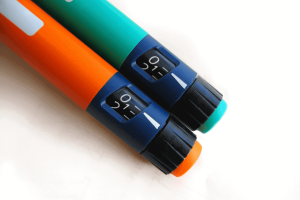Pump It Up! How Using an Insulin Pump Changed My Life
After I started taking insulin injections, I had several people–acquaintances, nurses, doctors–suggest that I may want to consider using an insulin pump. At the time, I thought that the pump was something people who could not manage their diabetes went to as a last resort. I wasn’t THAT sick with the disease!
About 6 years ago, my doctor changed offices and I decided to try a new doctor. The new doctor was young, just out of medical school, excited, enthusiastic, and persuasive. She talked to me openly and honestly about what using an insulin pump would mean and how it could improve my diabetic control.
I was intrigued, but scared. I had to learn about and rely on this piece of hardware that would be attached to me 24/7 forever!
The company that manufactures the pump had a nurse on staff locally to help me figure out which model I needed (based on how much insulin I was taking.) Once the pump was shipped, we arranged a time to get it set up and ready for me to use.
There are quite a few considerations to keep in mind when setting up an insulin pump:
- What basal rate of insulin do you need?
- What is the ratio of carbs to insulin you need to set so you get the right amount for the food you eat?
- How do you care for it?
- How do you change out the port?




